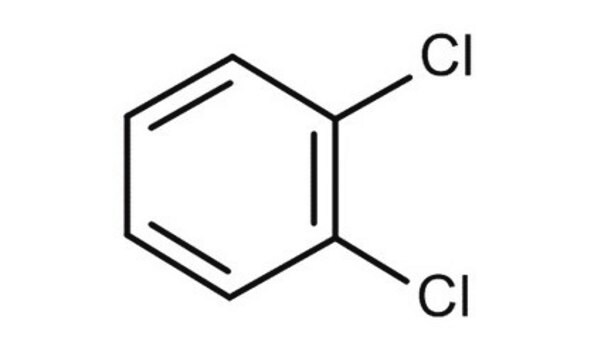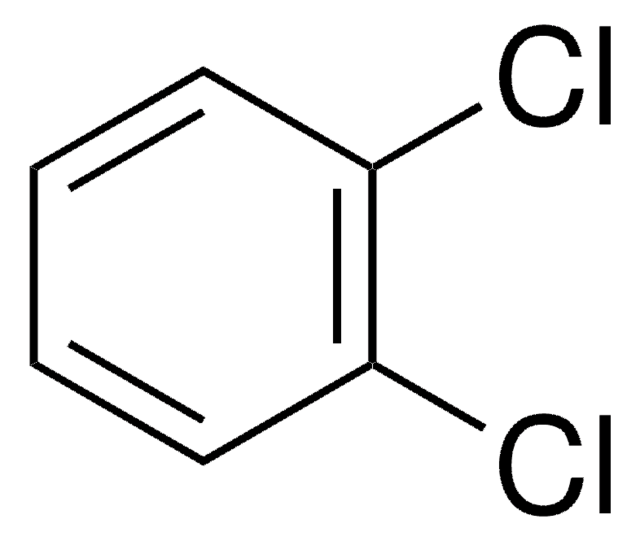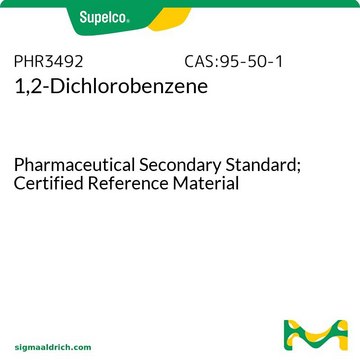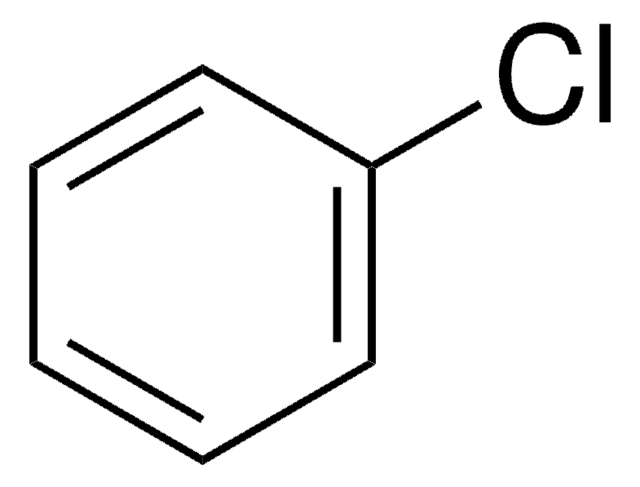D56802
1,2-Dichlorobenzene
ReagentPlus®, 99%
About This Item
Productos recomendados
grado
reagent
Nivel de calidad
densidad de vapor
5.1 (vs air)
presión de vapor
1.2 mmHg ( 20 °C)
1.6 mmHg ( 35 °C)
Línea del producto
ReagentPlus®
Ensayo
99%
Formulario
liquid
temp. de autoignición
1198 °F
lim. expl.
9.2 %
dilution
(for general lab use)
índice de refracción
n20/D 1.551 (lit.)
bp
178-180 °C (lit.)
mp
−18-−17 °C (lit.)
densidad
1.306 g/mL at 25 °C (lit.)
cadena SMILES
Clc1ccccc1Cl
InChI
1S/C6H4Cl2/c7-5-3-1-2-4-6(5)8/h1-4H
Clave InChI
RFFLAFLAYFXFSW-UHFFFAOYSA-N
¿Está buscando productos similares? Visita Guía de comparación de productos
Aplicación
- In the Wohl-Ziegler bromination of methoxyimino-o-tolyl-acetic acid methyl esters.
- To synthesize poly(butyleneterephthalate) copolyesters via polycondensation.
Información legal
Palabra de señalización
Warning
Frases de peligro
Consejos de prudencia
Clasificaciones de peligro
Acute Tox. 4 Inhalation - Acute Tox. 4 Oral - Aquatic Acute 1 - Aquatic Chronic 1 - Eye Irrit. 2 - Skin Irrit. 2 - Skin Sens. 1B - STOT SE 3
Órganos de actuación
Respiratory system
Código de clase de almacenamiento
6.1C - Combustible acute toxic Cat.3 / toxic compounds or compounds which causing chronic effects
Clase de riesgo para el agua (WGK)
WGK 2
Punto de inflamabilidad (°F)
150.8 °F - closed cup
Punto de inflamabilidad (°C)
66.0 °C - closed cup
Elija entre una de las versiones más recientes:
¿Ya tiene este producto?
Encuentre la documentación para los productos que ha comprado recientemente en la Biblioteca de documentos.
Los clientes también vieron
Nuestro equipo de científicos tiene experiencia en todas las áreas de investigación: Ciencias de la vida, Ciencia de los materiales, Síntesis química, Cromatografía, Analítica y muchas otras.
Póngase en contacto con el Servicio técnico











